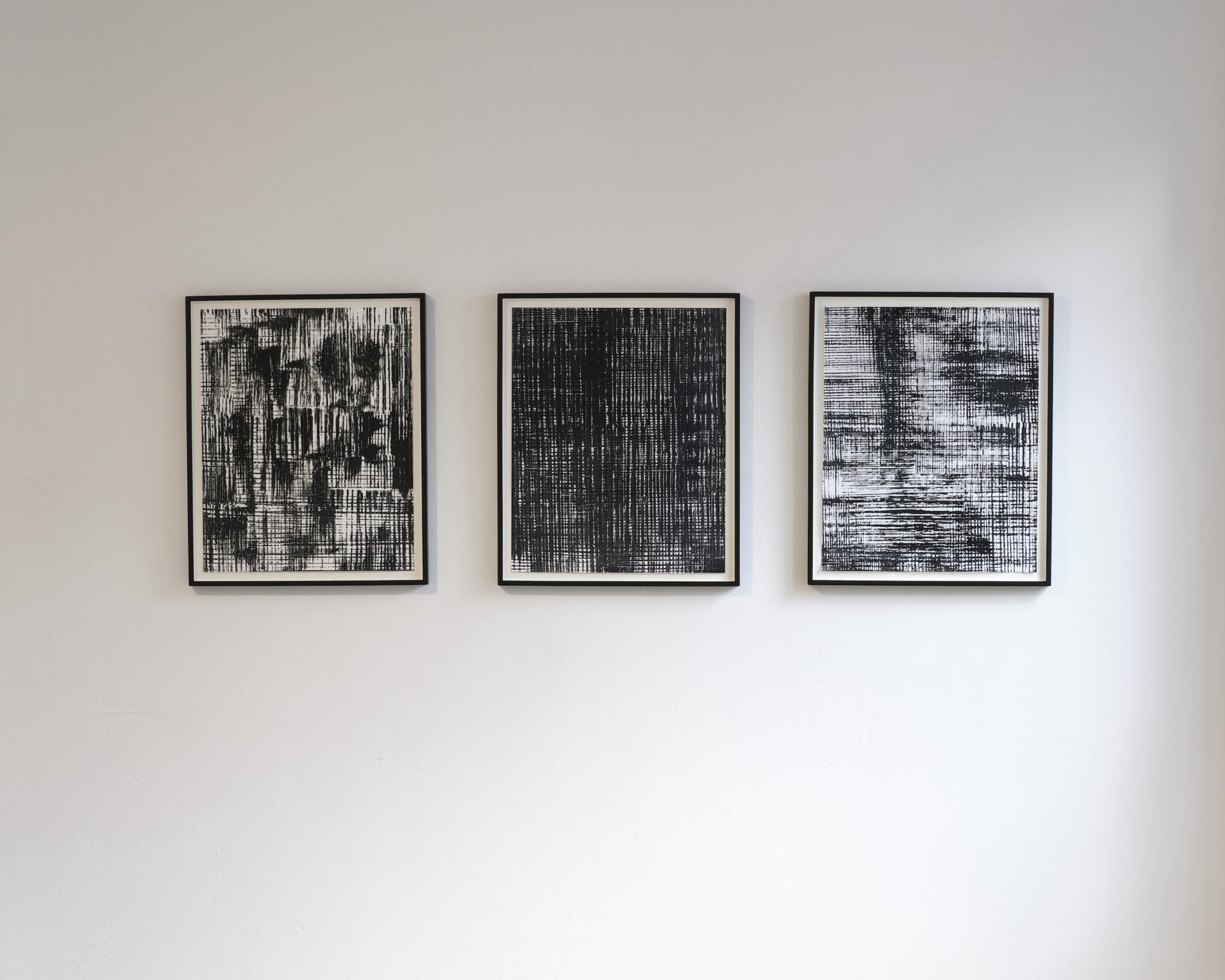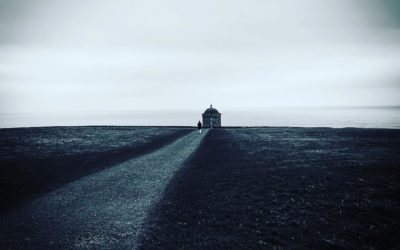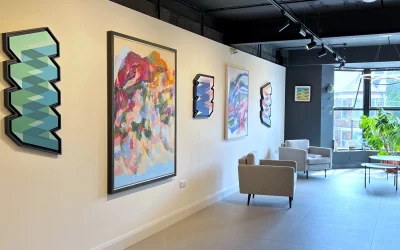‘OXYgen’ at Golden Thread Gallery, Belfast, is an exhibition of recent work by Dublin-based artist, Aoife Shanahan. Lining the gallery’s Project Space, 14 monochrome silver gelatin prints are organised as a pair, two groups of three and a larger sequence of six.
Joyce, Grid #2, and Grid #3 (2018) of similar dimensions, all feature grid-like patterns. At first, they seem like charcoal rubbings – not of natural objects, but rather of industrial materials, such are their semi-regimented compositions of horizontal and vertical elements. Their treatment is reminiscent of the threshold effect in image manipulation software, the hard contrast of black and white suggesting raised surfaces cast into relief. On closer inspection, however, Joyce, for example, contains smudges and tones, textures, thin lines and dusty particles – like powder chopped into lines with a razor.
Grid #2 is significantly denser – resembling a cropped detail of some vast skyscraper. Grid #3 is less busy and seems to exist after the crescendo of events in Grid #2. Joyce owes its title to Shanahan’s admission that when she “look[s] at this piece for long enough, the silhouette of James Joyce with his infamous bowler hat always peers back.” I also experience this pareidolia as I progress through the show, encountering waves, vegetation, mushrooms, mycelia, rock formations and galaxies, in what in many cases, must be a mixture of planned and random processes.
The exhibition title, ‘OXYgen’, is a reference to ‘OxyContin’, the highly addictive opioid medication used in pain treatment. Legally available on prescription, it is also a commonly abused street narcotic, ground into powder then injected or snorted. Shanahan manipulates the drug in powdered form – both dry and in suspension, it would seem – to create a series of photograms, a form of camera-less photography pioneered by Man Ray, Moholy-Nagy and others.
A second trio of works are like cross-sections of landscapes. Activity concentrates around a thin, white horizontal crease, where the photographic paper must have been folded to form a tent, onto which the narcotic powder was dropped or dribbled before being exposed – the series title, ‘Cascade’, perhaps a clue to this process. The effects created are highly evocative. In Folded Paper Cascade #17 (2019) and Folded Paper Cascade #13 (2019), the white line midway becomes a forest floor with an intense burst of activity just above and below ‘ground level’. It extends simultaneously upwards towards the canopy and deep underground.
In Folded Paper Cascade #9 (2019) the evaporated dribbles leave powdery trails, forming tiny white filaments, like hyphae venturing out into the inky blackness. Simultaneously, I am reminded of nocturnal aerial photographs, punctuated by concentrations of electric light in built-up areas. This micro to macro shift is also seen elsewhere in the show, from the detailed ‘Waves’ series to the swirls and galaxy formations of Cosmic #1 and Cosmic #2.
Works from the ‘Seascape’ and ‘Waves’ series are arranged from small to large to small again. In Seascape #4 (2018), waves crash against rock formations, drenching them in rivulets of foam and sending spray into the air. In Seascape #6 (2018) the waves clash with a furrowed landscape in seismic fluctuation, like two battling forces in some distant geological era. I am reminded of Tracy Hill’s ‘Matrix of Movement’ series, in which the artist manipulates data from commercial geomatics technology to create immersive monochromatic landscapes. In Waves #1 and Waves #2, fungi-like forms colonise all available space, creating networks of gills, crevices and ledges; they also resemble wrinkled sand formations or tissue under a microscope. Two further ‘Seascapes’complete this absorbing sequence, in which scale and detail surge and subsequently subside – a metaphor perhaps for the stimulant’s euphoric rush and inevitable comedown.
According to the gallery text, the works are an attempt to highlight how abstraction can be used as an “effective way of talking […] about the issues surrounding addiction” and “issues surrounding photographic representation”. Shanahan, who has a degree in pharmacy, has engaged intensely with an unusual medium, the history of which is fraught with corruption and mass addiction due to aggressive marketing by its manufacturers Purdue Pharma, owned by the billionaire Sackler family. This is not the first occasion where photography and big pharma have collided. Nan Goldin – herself a recovering OxyContin addict – through her activist group PAIN (Prescription Addiction Intervention Now) has taken on the Sackler family directly by staging protests in the major art institutions that have benefitted from its philanthropic donations. This has prompted the Metropolitan Museum in New York, Tate Britain and Tate Modern to remove plaques bearing the family’s name. However, these considerations aside, Shanahan’s works achieve a stark and mysterious beauty in their own right.
Jonathan Brennan is an artist based in Belfast.




